Balkinization
an unanticipated consequence of
Jack M. Balkin
Balkinization Symposiums: A Continuing List
E-mail:
Jack Balkin:
jackbalkin at yahoo.com
Bruce Ackerman
bruce.ackerman at yale.edu
Ian Ayres
ian.ayres at yale.edu
Corey Brettschneider
corey_brettschneider at brown.edu
Mary Dudziak
mary.l.dudziak at emory.edu
Joey Fishkin
joey.fishkin at gmail.com
Heather Gerken heather.gerken at yale.edu
Abbe Gluck abbe.gluck at yale.edu
Mark Graber
mgraber at law.umaryland.edu
Stephen Griffin
sgriffin at tulane.edu
Jonathan Hafetz
jonathan.hafetz at shu.edu
Jeremy Kessler
jkessler at law.columbia.edu
Andrew Koppelman
akoppelman at law.northwestern.edu
Marty Lederman
msl46 at law.georgetown.edu
Sanford Levinson
slevinson at law.utexas.edu
David Luban
david.luban at gmail.com
Gerard Magliocca
gmaglioc at iupui.edu
Jason Mazzone
mazzonej at illinois.edu
Linda McClain
lmcclain at bu.edu
John Mikhail
mikhail at law.georgetown.edu
Frank Pasquale
pasquale.frank at gmail.com
Nate Persily
npersily at gmail.com
Michael Stokes Paulsen
michaelstokespaulsen at gmail.com
Deborah Pearlstein
dpearlst at yu.edu
Rick Pildes
rick.pildes at nyu.edu
David Pozen
dpozen at law.columbia.edu
Richard Primus
raprimus at umich.edu
K. Sabeel Rahmansabeel.rahman at brooklaw.edu
Alice Ristroph
alice.ristroph at shu.edu
Neil Siegel
siegel at law.duke.edu
David Super
david.super at law.georgetown.edu
Brian Tamanaha
btamanaha at wulaw.wustl.edu
Nelson Tebbe
nelson.tebbe at brooklaw.edu
Mark Tushnet
mtushnet at law.harvard.edu
Adam Winkler
winkler at ucla.edu
Compendium of posts on Hobby Lobby and related cases
The Anti-Torture Memos: Balkinization Posts on Torture, Interrogation, Detention, War Powers, and OLC
The Anti-Torture Memos (arranged by topic)
Recent Posts
Gratitude, and a Reply in Two Parts
Just A Few Blogs
ACS Blog
Alas, a Blog
Althouse
Arts and Letters Daily
Atrios (Eschaton)
Bill of Health
Buzzflash.com
Buzz Machine
Cato at Liberty
Juan Cole (Informed Comment)
Concurring Opinions
The Constitution in 2020
Corrente
Crooked Timber
Daily Howler
Daily Kos
Dana Boyd
Brad DeLong
Digby (Hullabaloo)
Discriminations
Daniel Drezner
Kevin Drum (Mother Jones)
Electrolite
En Banc
Eunomia (Daniel Larison)
Fafblog
Michael Froomkin (Discourse.net)
GovLab (Beth Noveck)
Rick Hasen (Election Law)
History News Network
How Appealing
Ignatz (Sam Heldman)
The Importance of (Ernie Miller)
Infolaw
Instapundit
International Economic Law and Policy Blog
IntLawGrrls
Jacob Levy
Jesus' General
Jurisdynamics
The Kitchen Cabinet
Mark Kleiman
Law Blog Central
Larry Lessig
Lawyers, Guns and Money
Liberal Oasis
Brian Leiter's Law School Reports
The Leiter Reports
Marginal Revolution
Megan McArdle
Memeorandum
Metafilter
Mirror of Justice
The New Republic
Newseum
No More Mister Nice Blog
Brendan Nyhan
Opinio Juris
Orcinus
The Originalism Blog
Pandagon
Passport (Foreign Policy)
Overcoming Bias
Political Animal (Washington Monthly)
Political Theory Daily Review
Political Wire (Taegan Goddard)
The Poor Man
Virginia Postrel
Prawfsblawg
Public Reason
Jonathan Rauch
Raw Story
Redstate
ReligiousLeftLaw.com
Reporters Committee For Freedom of the Press
Reproductive Rights Blog
Rothman's Roadmap to the Right of Publicity
SCOTUS Blog
Seeing the Forest
Clay Shirky
The Shifted Librarian
The Situationist
Larry Solum (Legal Theory)
Andrew Sullivan
Talking Points Memo
Talk Left
Tapped
Tbogg
TechPresident
The Paper Chase (Jurist)
Tom Paine
Tom Tomorrow (This Modern World)
Eve Tushnet
Uggabugga
University of Chicago Law School Faculty Blog
Unqualified Offerings
The Volokh Conspiracy
War and Piece (Laura Rozen)
Wampum
Oliver Willis
Wonkette
Written Description
Matthew Yglesias
Yin
Your Choice of Feeds
1. XML
powered by
2. Atom Feed
3. RSS 2.0
Gratitude, and a Reply in Two Parts
Guest Blogger
For the Balkinization Symposium on Richard Primus, The Oldest Constitutional Question: Enumeration and Federal Power (Harvard University Press, 2025). Richard Primus If
I ever doubted that the production of knowledge was a collective activity, my
experience as the author of The Oldest Constitutional Question would set
me straight. While writing the book, I
learned so much from so many interlocutors.
It would have been impossible to write the book without the criticisms
and contributions of other people—not just one or two, but dozens. Now that the book exists, I continue to learn
from the reactions of scholars like the seven who participated in this
symposium: Christina Ponsa-Kraus, Sandy Levinson, Jonathan Gienapp, Bill Ewald,
Will Baude, Abbe Gluck, and John Mikhail.
It’s a privilege to have one’s work taken so seriously by such a
distinguished group. I’m deeply grateful
to them——and also to Jack Balkin for making the conversation possible. The
symposium essays raise a host of topics worth pursuing. Rather than responding to everything, I’ll
focus on two recurring themes. The first
is the role, in the career of enumerationism, of the transformation of American
jurisprudence from a natural-law orientation in the eighteenth century to a
more positivist approach by the twentieth.
The second is about the book’s intended audience and likely impact. I.
Natural Law and Positivism In
recent years, a growing body of scholarship has foregrounded the extent to
which Americans of the late eighteenth century brought a set of natural-law
assumptions, rather than positivist assumptions, to the project of
constitutional law. Enumerationism is a
positivist project: its premise is that certain enacted texts exhaust the law
on a particular topic. (To wit, that if
something isn’t traceable to specifications of congressional power in the text
of the Constitution, then it isn’t within the powers of Congress.) An enumerationist approach to reading the
Constitution is accordingly more at home in a positivist legal culture—and,
more particularly, a positivist legal culture that treats textual enactment as
the law-creating kind of social fact—than in a legal culture that treats
enacted texts as only a subset of the law.
In different ways, the essays by Bill Ewald, Jonathan Gienapp, and Abbe
Gluck pushed on this point. Does
modern enumerationism try to force an originally non-positivist charter of
government into a positivist mold? If
so, it would not necessarily follow that modern enumerationism is flawed. The adaptation of existing cultural forms to
new circumstances—what the host of this blog has taught me to think of as
bricolage—is a normal feature of legal systems.
But enumerationism understands itself as integral to the Constitution’s
original meaning, not as a framework imposed on the Constitution retrospectively. For our post-Erie world to read
eighteenth-century constitutional thought as if it operated on the basis of our
mostly positivist assumptions would be to engage in anachronism. Of all the important thematic questions raised
by the book, this is the one that I think I most underplayed. Here
and there, the book does raise the point.
Toward the end of the first chapter, for example, I spent a couple of
paragraphs explaining, with nods to some of Gienapp’s own work as well as that
of Mary Bilder, David Golove, and Daniel Hulsebosch, that the idea that a
constitutional question like “What can this legislature do?” could be answered
by working carefully through a list of enacted clauses on the understanding
that an action would be authorized if and only if something particular in that
set of clauses specifically authorized it is an idea more intuitive to modern
Americans, who are accustomed to thinking of the Constitution’s text as the
ultimate source of all constitutional authority, than it would have been to
most Americans at the Founding, when the legal culture into which Americans had
been socialized tended to regard the text of a written constitution (like that
of New York or Virginia) as one of several sources of constitutional law. (pp.
42-43) In a legal culture that easily
recognizes non-textual sources of constitutional law, an enacted constitutional
text might settle questions to which it clearly speaks, but lawyers are less
likely to think that constitutional questions can be settled on the basis of
omissions or negative implications drawn from that text. Where the text does not clearly answer a
question, a lawyer in a culture like that is more likely to draw openly upon
nontextual sources of authority, rather than continuing to maintain that the
text is what settles the question. (For
what it is worth, it is my sense that most questions not clearly settled by the
Constitution’s text are in fact settled by nontextual sources of authority in
our own culture, too, but that we are more inclined than people in less
positivistic systems to deny that fact, and more inclined instead to argue, and
often to believe in good faith, that what we are doing when we reason
nontextually is discovering the best reading of the text. It’s also my sense that the boundary between what
is and is not “clearly settled by the Constitution’s text” is substantially a
function of our nontextual intuitions about the content of constitutional
law.) Similarly,
the twentieth-century shift from the model of implied powers to the model of cumulative
coverage, which the book describes in chapters six and seven, is in essence a
shift from a non-positivist model to a positivist one (or, perhaps more
precisely, from a less positivist model to a more positivist one, or from a
model where a smaller share of the social facts creating constitutional law is
made up of enacted texts to a model where a larger share takes that form). Under the model of implied powers, Congress
has the powers enumerated in the constitutional text as well as some set of powers
inherent in national legislatures or implicit in the decision to create this
particular national legislature. That
model describes a fair amount of Supreme Court jurisprudence in the nineteenth
and early twentieth centuries, up through the first years of the New Deal. Under the model of cumulative coverage, which
has prevailed since the 1940s, Congress is understood as having only the powers
enumerated in the Constitution’s text, but those powers are construed
capaciously enough to include any regulatory project that Congress has the
political will to pursue. (Not every
regulatory project Congress wants to pursue is constitutional; the Constitution
affirmatively prohibits a bunch of things.
But under the model of cumulative coverage, a project that Congress
wants to pursue will not be deemed unconstitutional because it cannot be
grounded in any enumerated power.) It is
not an accident that the shift from implied powers to cumulative coverage is
contemporaneous with Erie Railroad v. Tompkins. As the prevailing jurisprudence of American
constitutional law became increasingly positivist and text-based, so did the
Court’s approach to congressional power.
I’ll
sum up this way: in the last third of the twentieth century, the question of whether
the Constitution’s text exhausted constitutional law (and especially judicially
enforceable constitutional law) was overwhelmingly a question about individual
rights, not a question about congressional powers. But attention to pre-New Deal approaches to
constitutional law means reckoning with the possibility of non-positive law not
just when it comes to individual rights but also when it comes to governmental
powers. One must contemplate something
like a natural law of government, whether in the vein of the law of nations or
otherwise. But the book does not develop
this theme deeply or systematically. It
leaves the jurisprudential frame largely in the background, rather than systematically
integrating its account of enumerated powers into the story of a larger conceptual
transition. The book would have been
richer if I had foregrounded the conceptual transition more than I did, and the
symposium participants are right to draw attention to the point. II.
Audience and Impact In different ways, the posts by Will
Baude, Sandy Levinson, John Mikhail, and Christina Ponsa-Kraus all address the
question of the book’s audience and its potential impact—or lack thereof—on
that audience. Levinson writes
(generously) that The Oldest Constitutional Question deserves a wide
audience but that its ideas will not matter all that much in the end if the
book cannot persuade one particularly small audience: the Supreme Court. I get what he’s saying. Law is a social phenomenon, or a set of
social phenomena, and within our legal system there are officials whose words
and actions shape the content of law, whether or not those words and actions
are intellectually optimal (or defensible) when measured against various other
criteria. So even if the Court is
“wrong” in the sense that its assertions about history run contrary to the way
that good historians would read the relevant historical sources, or its
assertions about how federalism works do not correspond to what competent
political scientists would report about the actual behavior of American
institutions, and so on, the Court’s views will shape what is “right” as a
matter of law. This matters. And I do not expect this book to persuade a
majority of Supreme Court Justices now sitting to change their views about
congressional power. Federal judges are
fully formed adults with established worldviews, and those worldviews don’t
often change in response to books that law professors write. But I still think the book can matter, even
if it can’t reach and persuade that particular (and undoubtedly important)
audience. To think about how and why, it might
be helpful to note the way that Baude’s post characterizes the book’s likely
impact. The Oldest Constitutional
Question, Baude writes, makes an argument strong enough to give people who
want to believe its thesis permission to do so, but it does not make an
argument strong enough to compel the rest of its readership to abandon the
conventional account. There’s something
important here. To assess the persuasive
capacities of an argument, one must be attentive to the predispositions of the
audience—a fact that’s true both in scholarship and in litigation. (It’s very hard for a creative legal
argument, no matter how clever or how sound, to convince a court to go
somewhere new that the court really doesn’t want to go. What creative advocacy can do is
persuade a court that wants to go somewhere new, but worries the law doesn’t
permit it to go there, that the law in fact authorizes the court to go
precisely where the court wishes it could go.) But in thinking about my aim in
writing this book, I divide the audience differently from the way Baude
does. Rather than thinking in terms of
two groups—those who are already hoping to be convinced and everyone else—I
think in terms of three. The first group
is people who are hoping to be convinced.
The second group is people who are committed to the conventional
account. The third group is people who
fall in neither category. Some members
of the third group are lawyers and legal academics who, for whatever reason,
have no strong feelings about the constitutional law of congressional
power. Many more members of the third
group are people who are not yet lawyers at all. They are future law students. As of now, they are neither committed to the
conventional account nor hoping to be persuaded by an alternative, because they
have not yet entered into conversation on the topic. My
hope is that a book like The Oldest Constitutional Question can persuade
a sizeable chunk of that audience, when it decides what it thinks, that my
account makes more sense than the conventional approach. That project doesn’t require confronting
people already accustomed to seeing the world one way and asking them to
change. It just requires making a good
enough argument that people would choose it if they didn’t have to incur the
intellectual switching costs of giving up one paradigm for another. Yes, that means that my aspiration is
Kuhnian, in the sense that John Mikhail’s post identified. Which is fine with me, because Kuhn was
right. I’m not disavowing any hope of
persuading mid-career professionals who up until now have accepted
enumerationism as correct. On the
contrary, I know from reader feedback that the number of people deeply steeped
in American constitutional law and theory who, upon struggling with my
arguments, do in fact change their minds is more than zero. Whether it will be many more than zero, I
cannot say. But even if the book fails
to persuade most people who already know their way around this material and are
satisfied with the conventional view, there is value in getting them to see why
a person inclined to be skeptical of the conventional view would have
intellectual permission to reject it.
“We assert that enumerationism is the only valid approach and that no
person of intelligence and good faith could think otherwise” is a meaningfully
different posture from “We adopt the enumerationist approach, but we understand
that intelligent people could in good faith think something else.” Judges (and other people) with the former stance
will apply enumerationism more stringently than judges (and other people) with
the latter one. The latter stance is
more consistent with a legal culture that is willing to question premises and
that values intellectual modesty. And,
of course, the latter stance would mean that, if a next generation finds my
views persuasive, it will be more able to adopt those views without seeming
quite so heretical to its predecessor. So I end this discussion where the
symposium began: with Christina Ponsa-Kraus’s focus on what this book means for
teaching introductory classes in constitutional law. If the ideas in the book are to have
significant impact, they will need to affect the way that law professors
teach. Ponsa-Kraus writes that The
Oldest Constitutional Question will make teaching constitutional law easier
in some ways and harder in others: easier because it supplies an organizing
scheme for understanding many otherwise puzzling features of the conventional
story, if one bothers to notice them, and harder because it makes the
conventional account harder to teach as unproblematic wisdom, even though that
conventional account is, by virtue of its status as the official story of the
law, something that all students of constitutional law must learn. In
my own experience, the journey from having an essentially conventional view
about enumerated powers (which is where I began) to having the view articulated
in this book has made teaching introductory constitutional law a good deal
harder. I know that I need to teach
students the conventional understanding of enumerated powers. That’s a requirement of professional
competence in a world where enumerationism is the dominant paradigm. But given my current understanding, I also
feel an obligation to teach students that the dominance of enumerationism
should not make them think that the things constitutional lawyers customarily
say about enumerated powers actually make sense. As I put the point in the book’s
introduction, enumerationism has a paradoxical relationship with constitutional
knowledge. One cannot be a competent
practitioner of constitutional law without understanding, and being able to
work within, the enumerationist paradigm.
But one who mistakes that paradigm for unfiltered truth will
misunderstand a bunch of important things.
So it is necessary to teach students how to see the subject through an
enumerationist lens, but a really good education in the subject would also
teach students that enumerationism is just that: a lens through which
constitutional law can be understood, and not the only possible lens or even
necessarily the most sensible one. I
do not see the introductory course in constitutional law as a forum for me to
propagate my own views about constitutional law, and I will not measure the
success of my pedagogy by reference to the proportion of my students who reject
enumerationism when the semester is done.
But I do think I owe my students the opportunity to do more than
assimilate the reigning paradigm. I want
them to confront the best arguments in favor of enumerationism and also the
biggest problems with that framework, so that they can begin the process of
thinking about what makes the most sense to them. In that respect, my approach to teaching
about congressional power is not different from my approach to teaching about
judicial review, or equal protection, or any of the other subjects covered in
the introductory course. My hope is that
The Oldest Constitutional Question presents a critique of enumerationism
serious enough to persuade other teachers of constitutional law that their
students should grapple with it. So
if you teach constitutional law, I hope you will read the book and decide for
yourself whether the perspective it articulates is something law students
should confront.
Posted
9:30 AM
by Guest Blogger [link]
Books by Balkinization Bloggers

Linda C. McClain and Aziza Ahmed, The Routledge Companion to Gender and COVID-19 (Routledge, 2024)

David Pozen, The Constitution of the War on Drugs (Oxford University Press, 2024)

Jack M. Balkin, Memory and Authority: The Uses of History in Constitutional Interpretation (Yale University Press, 2024)
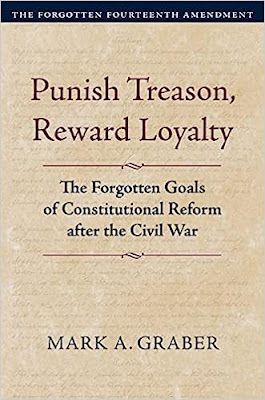
Mark A. Graber, Punish Treason, Reward Loyalty: The Forgotten Goals of Constitutional Reform after the Civil War (University of Kansas Press, 2023)
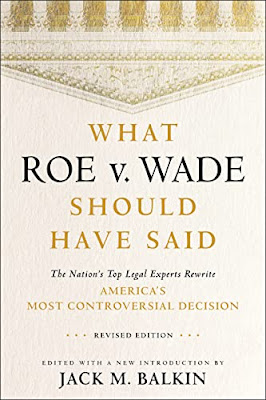
Jack M. Balkin, What Roe v. Wade Should Have Said: The Nation's Top Legal Experts Rewrite America's Most Controversial Decision - Revised Edition (NYU Press, 2023)

Andrew Koppelman, Burning Down the House: How Libertarian Philosophy Was Corrupted by Delusion and Greed (St. Martin’s Press, 2022)

Gerard N. Magliocca, Washington's Heir: The Life of Justice Bushrod Washington (Oxford University Press, 2022)
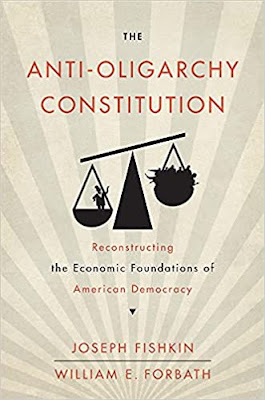
Joseph Fishkin and William E. Forbath, The Anti-Oligarchy Constitution: Reconstructing the Economic Foundations of American Democracy (Harvard University Press, 2022)
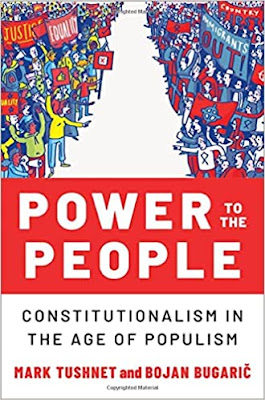
Mark Tushnet and Bojan Bugaric, Power to the People: Constitutionalism in the Age of Populism (Oxford University Press 2021).

Mark Philip Bradley and Mary L. Dudziak, eds., Making the Forever War: Marilyn B. Young on the Culture and Politics of American Militarism Culture and Politics in the Cold War and Beyond (University of Massachusetts Press, 2021).

Jack M. Balkin, What Obergefell v. Hodges Should Have Said: The Nation's Top Legal Experts Rewrite America's Same-Sex Marriage Decision (Yale University Press, 2020)

Frank Pasquale, New Laws of Robotics: Defending Human Expertise in the Age of AI (Belknap Press, 2020)

Jack M. Balkin, The Cycles of Constitutional Time (Oxford University Press, 2020)

Mark Tushnet, Taking Back the Constitution: Activist Judges and the Next Age of American Law (Yale University Press 2020).

Andrew Koppelman, Gay Rights vs. Religious Liberty?: The Unnecessary Conflict (Oxford University Press, 2020)

Ezekiel J Emanuel and Abbe R. Gluck, The Trillion Dollar Revolution: How the Affordable Care Act Transformed Politics, Law, and Health Care in America (PublicAffairs, 2020)

Linda C. McClain, Who's the Bigot?: Learning from Conflicts over Marriage and Civil Rights Law (Oxford University Press, 2020)
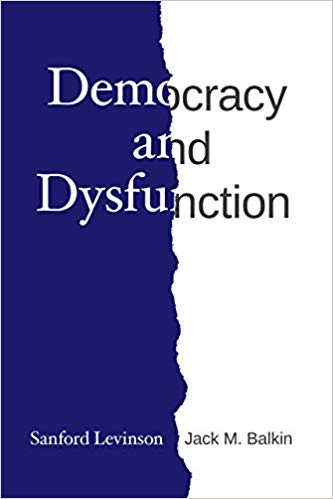
Sanford Levinson and Jack M. Balkin, Democracy and Dysfunction (University of Chicago Press, 2019)

Sanford Levinson, Written in Stone: Public Monuments in Changing Societies (Duke University Press 2018)

Mark A. Graber, Sanford Levinson, and Mark Tushnet, eds., Constitutional Democracy in Crisis? (Oxford University Press 2018)

Gerard Magliocca, The Heart of the Constitution: How the Bill of Rights became the Bill of Rights (Oxford University Press, 2018)

Cynthia Levinson and Sanford Levinson, Fault Lines in the Constitution: The Framers, Their Fights, and the Flaws that Affect Us Today (Peachtree Publishers, 2017)

Brian Z. Tamanaha, A Realistic Theory of Law (Cambridge University Press 2017)

Sanford Levinson, Nullification and Secession in Modern Constitutional Thought (University Press of Kansas 2016)

Sanford Levinson, An Argument Open to All: Reading The Federalist in the 21st Century (Yale University Press 2015)

Stephen M. Griffin, Broken Trust: Dysfunctional Government and Constitutional Reform (University Press of Kansas, 2015)

Frank Pasquale, The Black Box Society: The Secret Algorithms That Control Money and Information (Harvard University Press, 2015)

Bruce Ackerman, We the People, Volume 3: The Civil Rights Revolution (Harvard University Press, 2014)
Balkinization Symposium on We the People, Volume 3: The Civil Rights Revolution

Joseph Fishkin, Bottlenecks: A New Theory of Equal Opportunity (Oxford University Press, 2014)

Mark A. Graber, A New Introduction to American Constitutionalism (Oxford University Press, 2013)

John Mikhail, Elements of Moral Cognition: Rawls' Linguistic Analogy and the Cognitive Science of Moral and Legal Judgment (Cambridge University Press, 2013)

Gerard N. Magliocca, American Founding Son: John Bingham and the Invention of the Fourteenth Amendment (New York University Press, 2013)

Stephen M. Griffin, Long Wars and the Constitution (Harvard University Press, 2013)

Andrew Koppelman, The Tough Luck Constitution and the Assault on Health Care Reform (Oxford University Press, 2013)

James E. Fleming and Linda C. McClain, Ordered Liberty: Rights, Responsibilities, and Virtues (Harvard University Press, 2013)
Balkinization Symposium on Ordered Liberty: Rights, Responsibilities, and Virtues

Andrew Koppelman, Defending American Religious Neutrality (Harvard University Press, 2013)

Brian Z. Tamanaha, Failing Law Schools (University of Chicago Press, 2012)

Sanford Levinson, Framed: America's 51 Constitutions and the Crisis of Governance (Oxford University Press, 2012)

Linda C. McClain and Joanna L. Grossman, Gender Equality: Dimensions of Women's Equal Citizenship (Cambridge University Press, 2012)

Mary Dudziak, War Time: An Idea, Its History, Its Consequences (Oxford University Press, 2012)

Jack M. Balkin, Living Originalism (Harvard University Press, 2011)

Jason Mazzone, Copyfraud and Other Abuses of Intellectual Property Law (Stanford University Press, 2011)

Richard W. Garnett and Andrew Koppelman, First Amendment Stories, (Foundation Press 2011)

Jack M. Balkin, Constitutional Redemption: Political Faith in an Unjust World (Harvard University Press, 2011)

Gerard Magliocca, The Tragedy of William Jennings Bryan: Constitutional Law and the Politics of Backlash (Yale University Press, 2011)

Bernard Harcourt, The Illusion of Free Markets: Punishment and the Myth of Natural Order (Harvard University Press, 2010)

Bruce Ackerman, The Decline and Fall of the American Republic (Harvard University Press, 2010)
Balkinization Symposium on The Decline and Fall of the American Republic

Ian Ayres. Carrots and Sticks: Unlock the Power of Incentives to Get Things Done (Bantam Books, 2010)

Mark Tushnet, Why the Constitution Matters (Yale University Press 2010)
Ian Ayres and Barry Nalebuff: Lifecycle Investing: A New, Safe, and Audacious Way to Improve the Performance of Your Retirement Portfolio (Basic Books, 2010)
.jpg)
Jack M. Balkin, The Laws of Change: I Ching and the Philosophy of Life (2d Edition, Sybil Creek Press 2009)

Brian Z. Tamanaha, Beyond the Formalist-Realist Divide: The Role of Politics in Judging (Princeton University Press 2009)
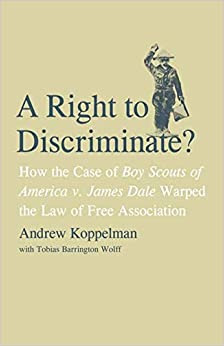
Andrew Koppelman and Tobias Barrington Wolff, A Right to Discriminate?: How the Case of Boy Scouts of America v. James Dale Warped the Law of Free Association (Yale University Press 2009)

Jack M. Balkin and Reva B. Siegel, The Constitution in 2020 (Oxford University Press 2009)
Heather K. Gerken, The Democracy Index: Why Our Election System Is Failing and How to Fix It (Princeton University Press 2009)

Mary Dudziak, Exporting American Dreams: Thurgood Marshall's African Journey (Oxford University Press 2008)

David Luban, Legal Ethics and Human Dignity (Cambridge Univ. Press 2007)

Ian Ayres, Super Crunchers: Why Thinking-By-Numbers is the New Way to be Smart (Bantam 2007)

Jack M. Balkin, James Grimmelmann, Eddan Katz, Nimrod Kozlovski, Shlomit Wagman and Tal Zarsky, eds., Cybercrime: Digital Cops in a Networked Environment (N.Y.U. Press 2007)
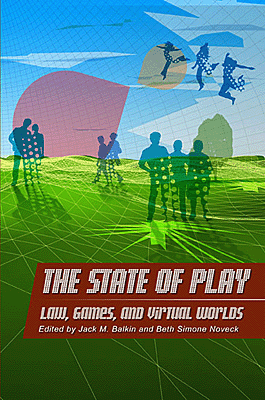
Jack M. Balkin and Beth Simone Noveck, The State of Play: Law, Games, and Virtual Worlds (N.Y.U. Press 2006)

Andrew Koppelman, Same Sex, Different States: When Same-Sex Marriages Cross State Lines (Yale University Press 2006)
Brian Tamanaha, Law as a Means to an End (Cambridge University Press 2006)
Sanford Levinson, Our Undemocratic Constitution (Oxford University Press 2006)
Mark Graber, Dred Scott and the Problem of Constitutional Evil (Cambridge University Press 2006)
Jack M. Balkin, ed., What Roe v. Wade Should Have Said (N.Y.U. Press 2005)
Sanford Levinson, ed., Torture: A Collection (Oxford University Press 2004)
Balkin.com homepage
Bibliography
Conlaw.net
Cultural Software
Writings
Opeds
The Information Society Project
BrownvBoard.com
Useful Links
Syllabi and Exams